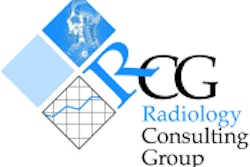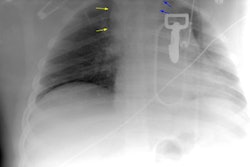A class-action lawsuit was filed Tuesday against the residency matching program on behalf of 200,000 U.S. residents who claim the system violates antitrust laws. The suit, filed in Washington, DC, states that medical organizations and private practices manipulate the National Residency Matching Program in order to consistently underpay and overwork residents.
The residents’ main complaint is that there is no room for negotiating wages, hours, or other terms of employment. Potential employers also share salary information with one another, which can force residents to accept below-market wages for the duration of their residency, the suit charges (New York Times, May 7, 2002).
Another issue addressed in the lawsuit is the practice of standardized salaries among residents regardless of academic merit or the ranking of their medical school. Resident salaries -- which average $35,552 a year -- are closely matched among programs, in contrast to post-residency pay, which varies according to medical specialty and geographic location.
While antitrust law experts commented in the Times article that the suit is valid because the match program prevents residents from contemplating competing offers, critics say that residency isn’t merely a job, but a kind of continuing medical education.
"There is some truth to the theory that the residency matching program fosters an anti-competitive environment. Residency training, however, is somewhat unique given the fact that there is a large component of intrinsic education (not just on-the-job learning), as well as a significant component of practical application," commented Dr. Douglas Beall in an e-mail to AuntMinnie.com. Beall is the author of A Practical Guide to Residency in Diagnostic Radiology.
Because training is done under the close supervision of attending physicians, residency offers more than standard on-the-job training. Many medical students select programs based on the quality of the program and not the pay rate, Beall said. In addition, many medical students receive substantial funding from U.S. government-funded programs.
"While there is no good justification for the low range of resident salaries, medicine is unique insofar as it receives a large amount of monetary support by Medicare, the only consistent and explicit payor of medical education," Beall said. "Their profession is probably the only one that is subsidized to a significant degree by taxpayer dollars. It seems that the real loser in this situation will be the hospitals and other medical institutions whose primary charge is patient care, and a by-product of that patient care is medical education."
Residents involved in the suit claim that institutions use them as cheap labor, expecting them to devote much of their 100-plus-hour work week to menial administrative tasks rather than quality time with patients.
The U.S. Department of Justice scrutinized the residency matching program in the 1990s, but did not find anything substantially amiss with the system. In 1997, Alvin Roth, an economics professor at Harvard University in Boston, redesigned the matching program to the current system.
While residents decry a lack of bargaining power when matched with an institution, a 1999 decision by the U.S. National Labor Relations Board (Case 1-RC-20574) determined that residents are employees, not merely students. As a result, the same federal employment protection laws apply to them.
By Shalmali PalAuntMinnie.com staff writer
May 8, 2002
Related Reading
ARRS president urges rads to take stock in the future, April 29, 2002
Life after residency: Making the transition to practice, May 14, 2001
Copyright © 2002 AuntMinnie.com



















